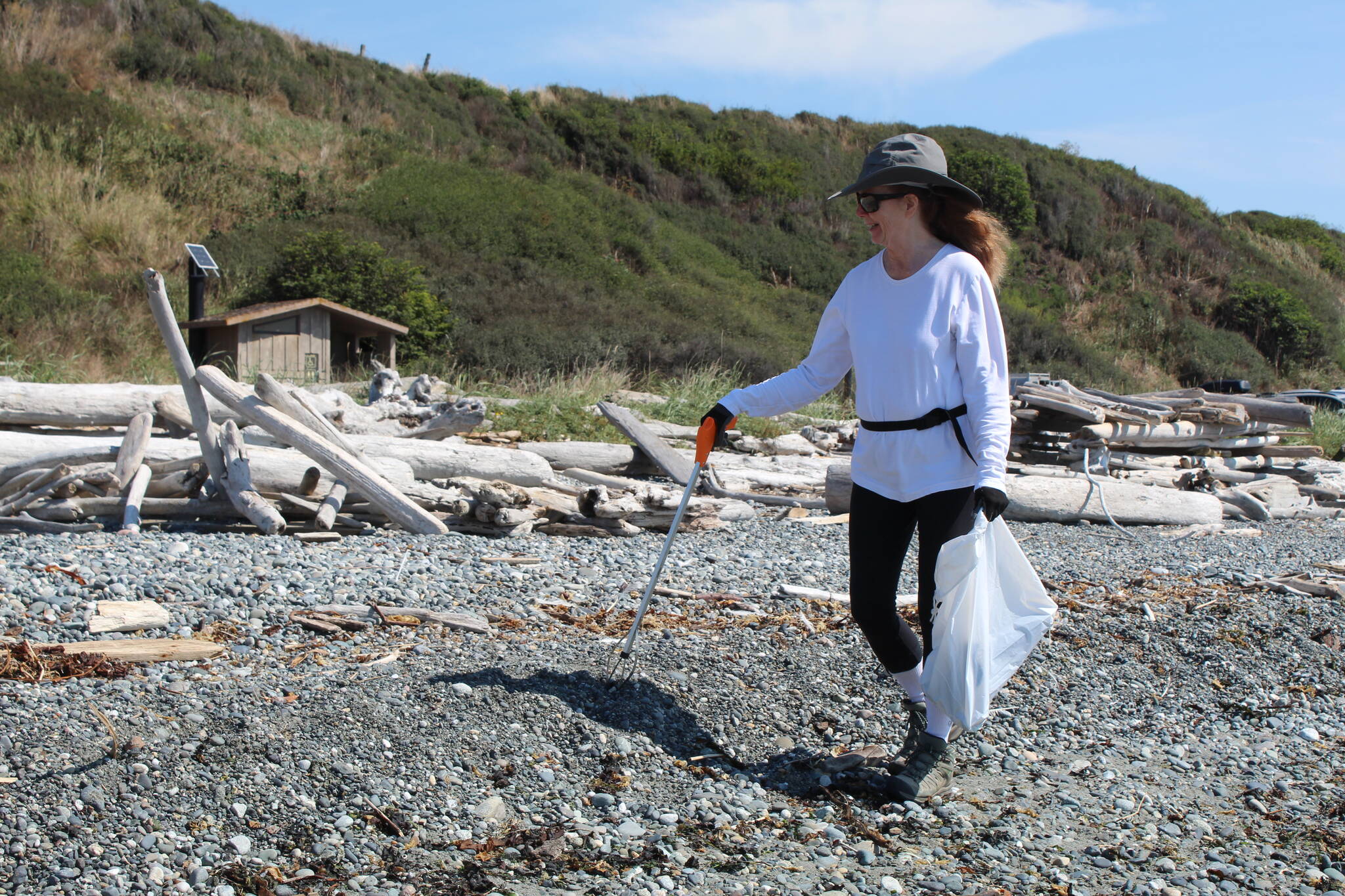Every week for over two decades, Island County volunteers have taken to the beaches armed with trash pickers and garbage bags.
The Washington State University Island County Extension’s Community Litter Cleanup Program has evolved since its inception in 1996, but its purpose has always been the same: to beautify and preserve Whidbey and Camano beaches.
Volunteers meet at a different Island County beach each Tuesday from 1 to 3 p.m., except when tides necessitate a change in time. Program coordinator Kacie Dominici said the weekly cleanup draws a core group of eight to 10 volunteers, though anyone else interested in helping out is welcome to join.
“We’re just looking for anybody else who wants to come out and volunteer their time,” she said.
Coupeville resident Debbie Arnold said she and her husband Eric began volunteering with the extension program in 2019, shortly after moving into town. While the program went on hiatus during the pandemic, they continued to pick up trash on the beaches on their own.
“It’s great to be able to do something practical and measurable to help our beautiful Whidbey beaches and its wildlife,” Arnold said. “Getting human-created trash off the beach is a simple yet quite rewarding experience and a great way to get outside and enjoy nature.”
Dominici said Whidbey beach-goers seem to have gotten more conscientious about how they leave island shorelines since the COVID-19 pandemic began. Cleanup volunteers have seen less trash left behind in recent years, but most of the litter found on Whidbey beaches doesn’t originate on the island.
During the winter months, Dominici said, storms stir up trash from the “Great Pacific Garbage Patch,” an area between Hawaii and the California coast where marine debris accumulates, and carries it to Whidbey shores, making winter the busiest season for the volunteers.
Despite the higher volume of work, longtime volunteer Darwin Christopherson said stormy winter days are his favorite time to be out cleaning up the beaches.
“Cold and windy days are best. When we are done, there is a sense of having been,” he said. “Somehow, we feel we earned that hot cup of coffee and the warm, quiet drive home.”
The large amount of debris is harmful to marine life. Ingesting plastics harms or kills marine mammals and birds. Zooplankton and crabs struggle to multiply. Microplastics have even made their way up the food chain to humans.
“The impact is quite severe,” Dominici said.
The program coordinator said people can reduce their impact by being more aware of what they buy at the store. Exfoliating facial scrubs with plastic microbeads and clothing made with synthetic rather than natural fibers, for example, all wind up depositing plastic in the ocean.
Those interested in volunteering can contact Dominici at 360-639-6060. Upcoming cleanup locations will be Double Bluff from noon to 2 p.m. on Sept. 20, Windjammer Park on Sept. 27, Deception Pass from 9 to 11 a.m. on Oct. 4, Fort Casey on Oct. 11, Keystone East on Oct. 18 and Ebey’s Landing on Oct. 25. All cleanup events will take place from 1 to 3 p.m. unless otherwise specified. A full schedule can be found at extension.wsu.edu/island/nrs/beachlitter.



